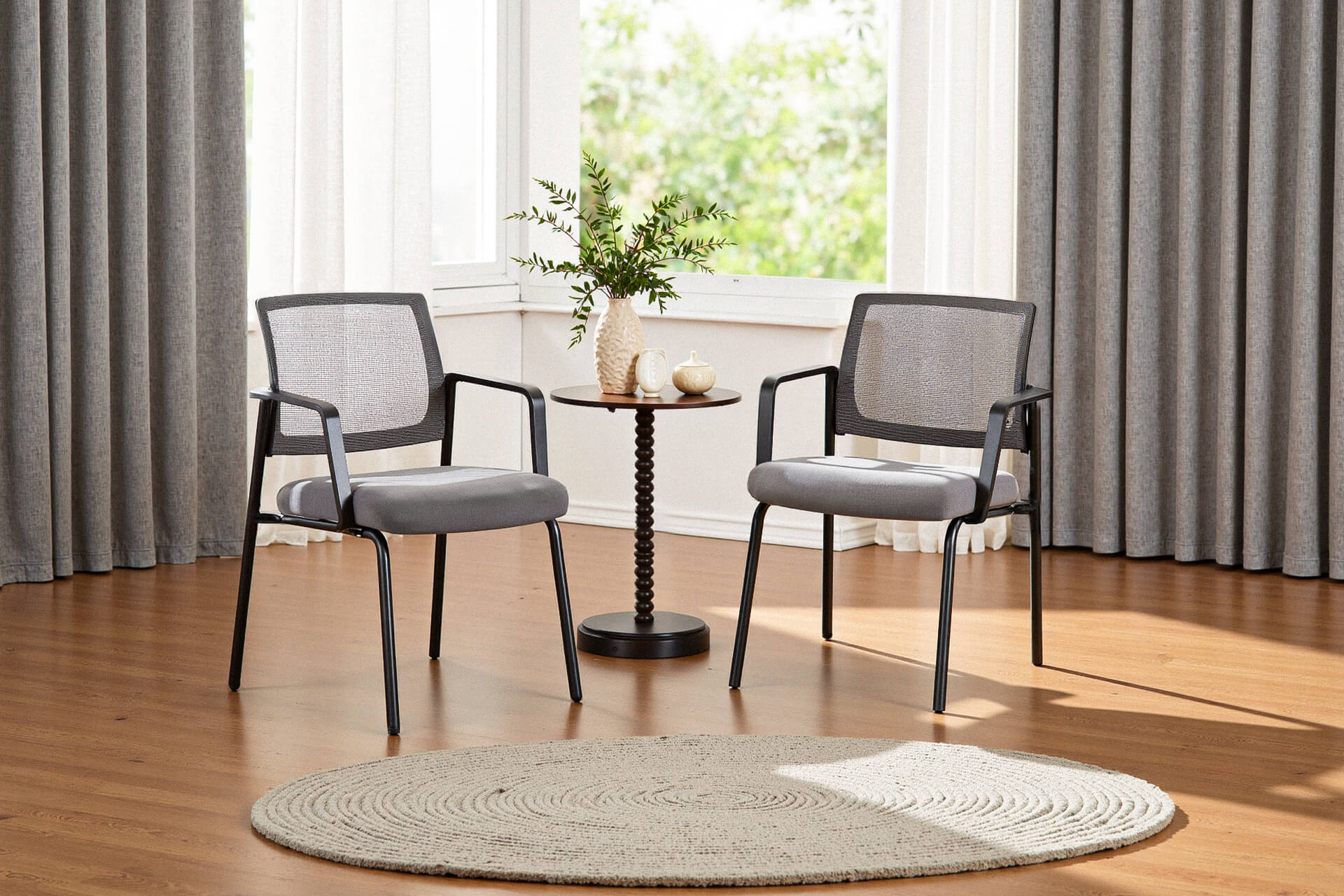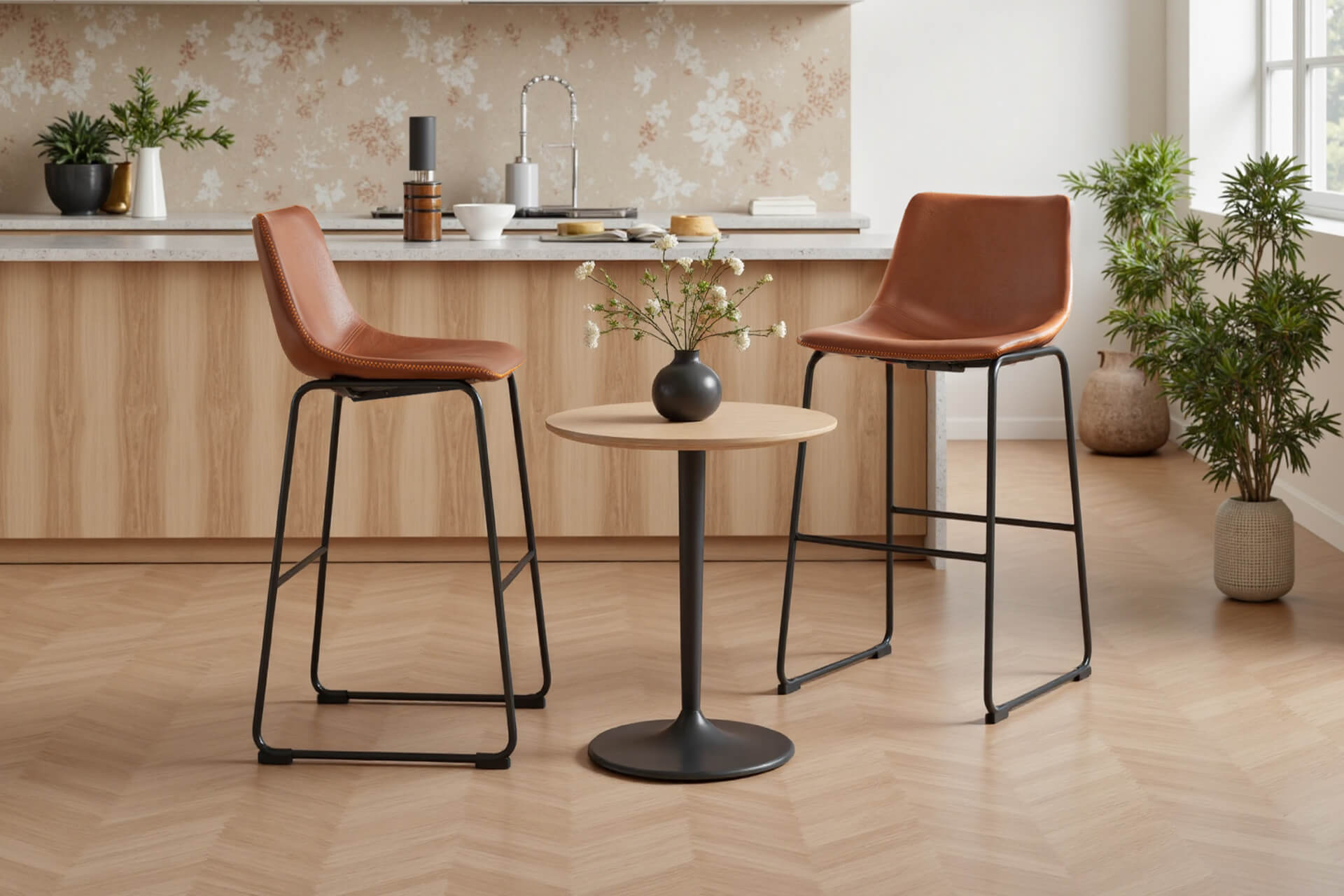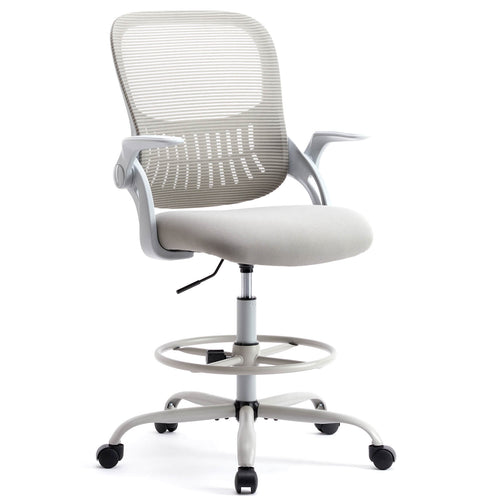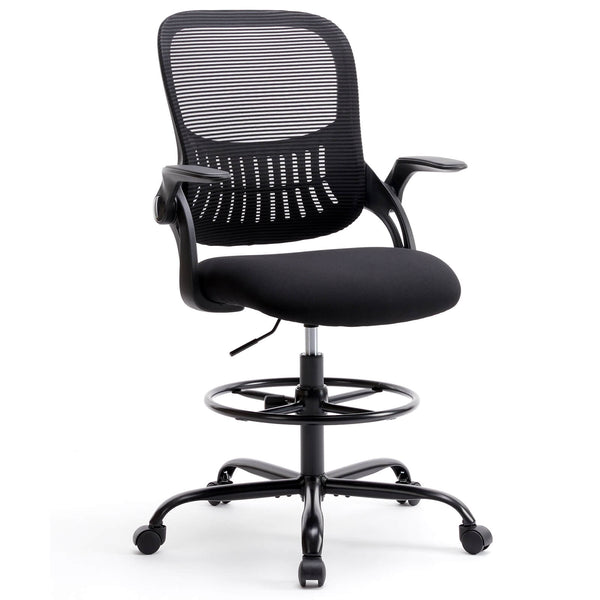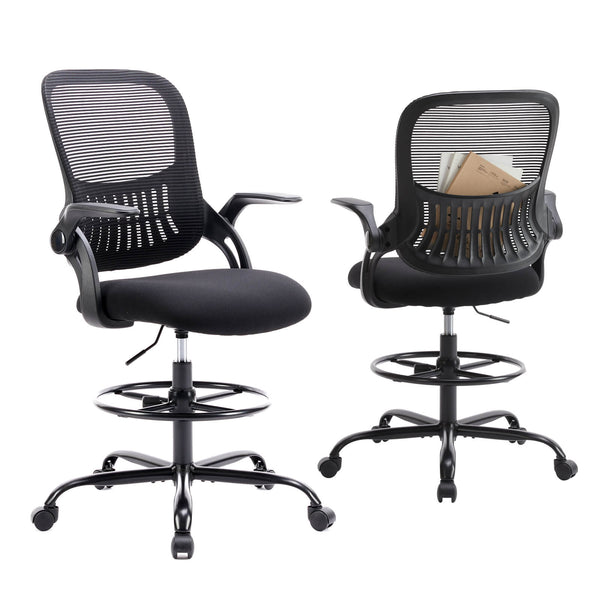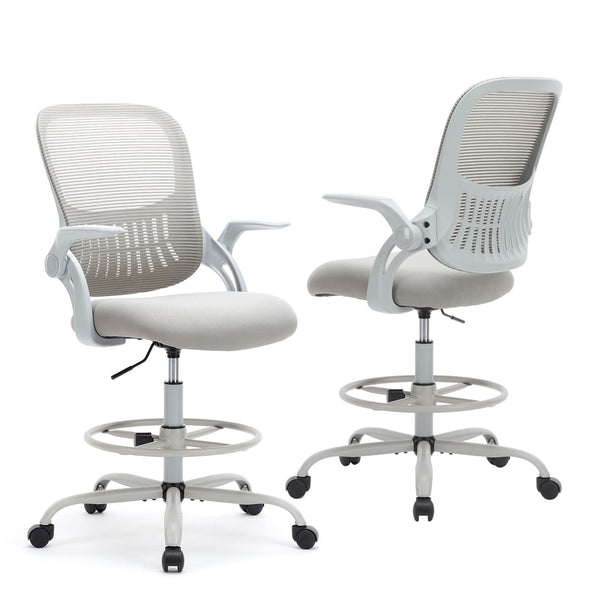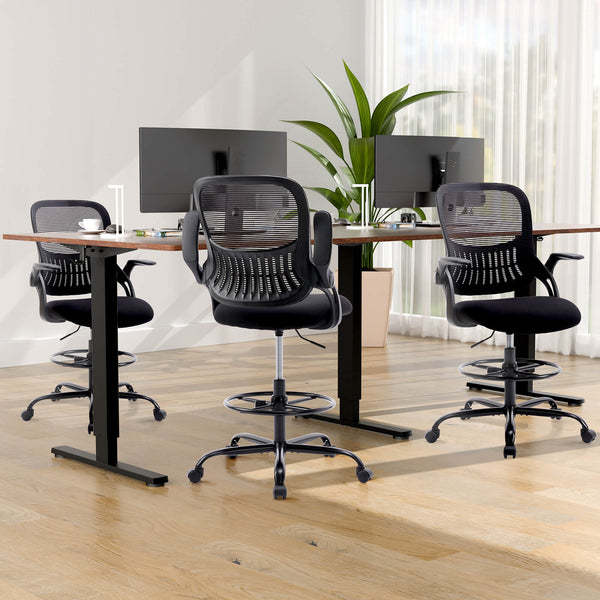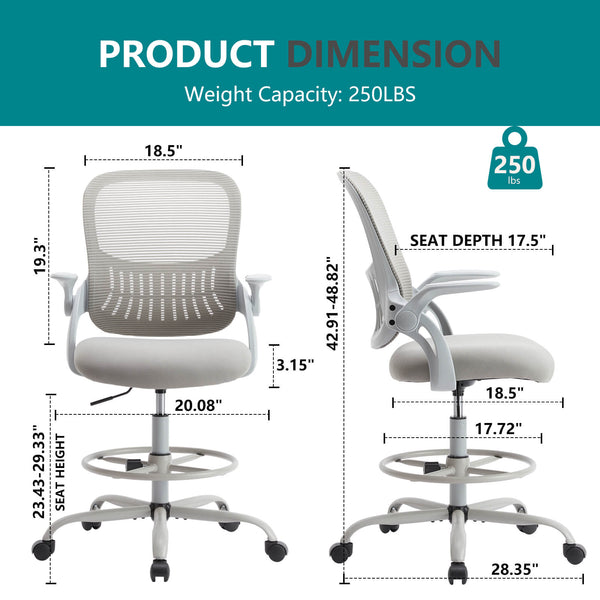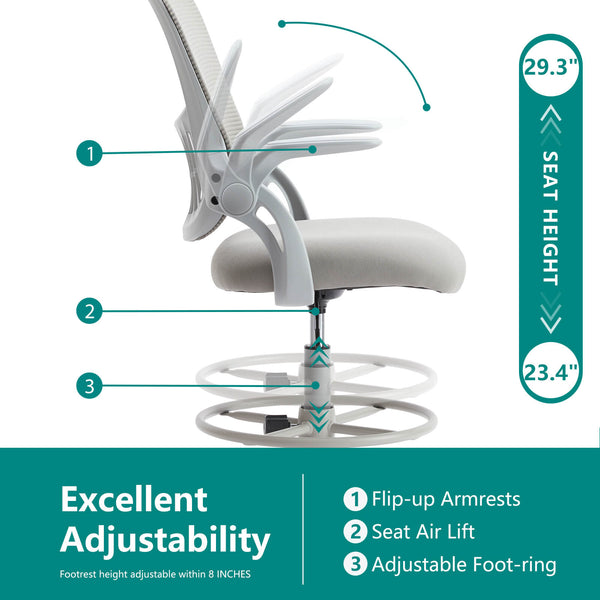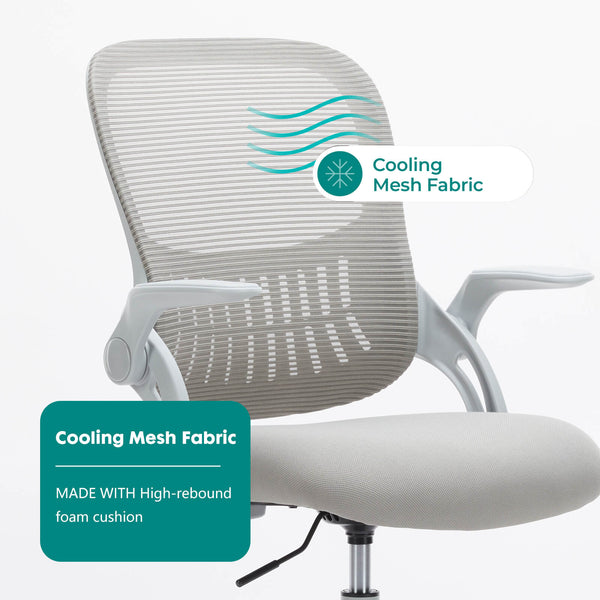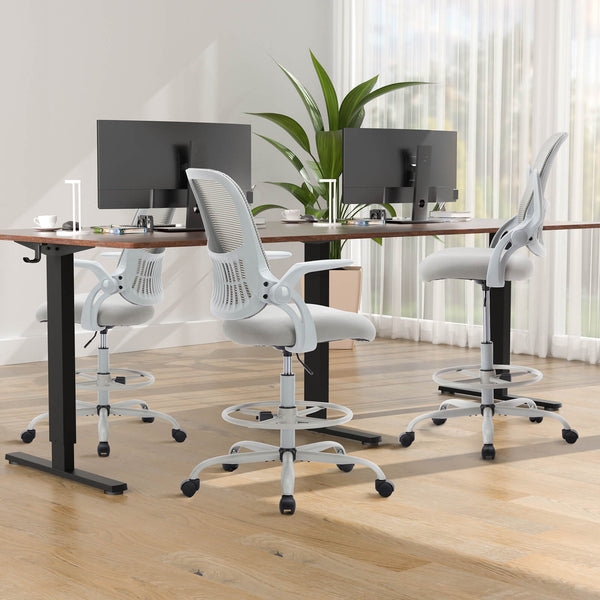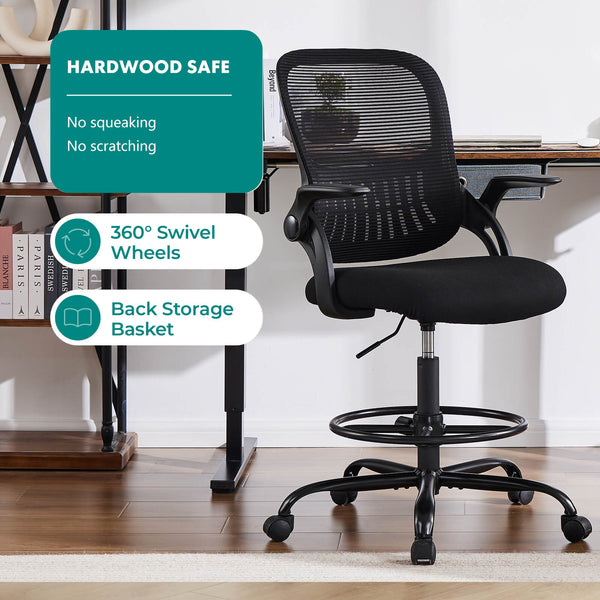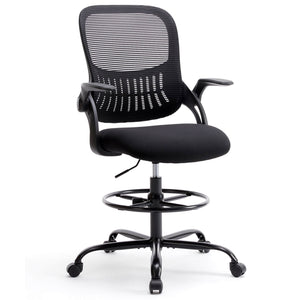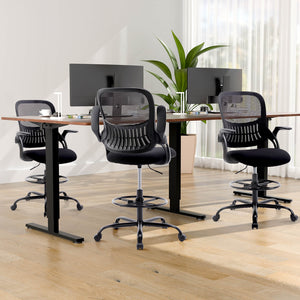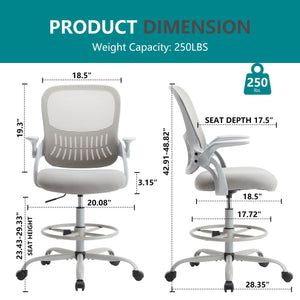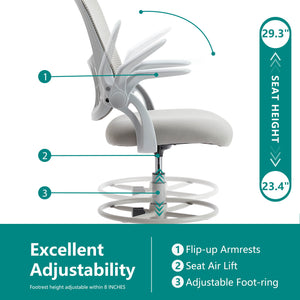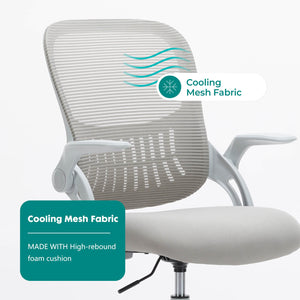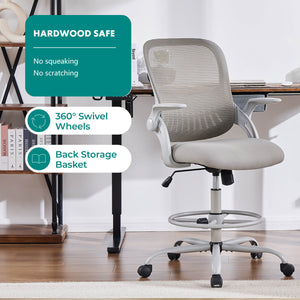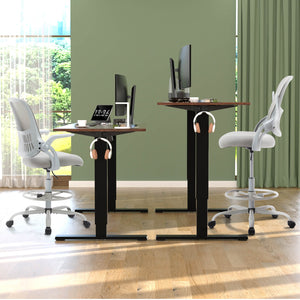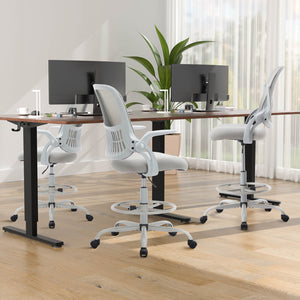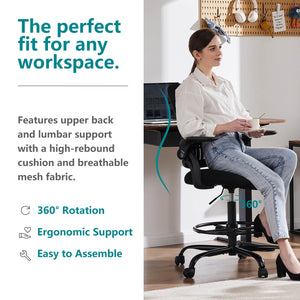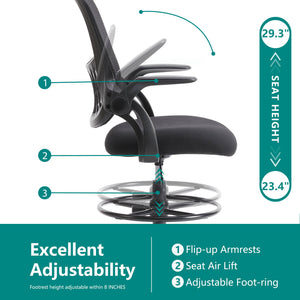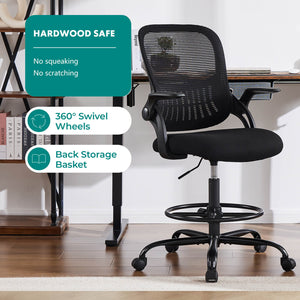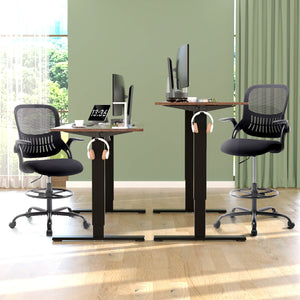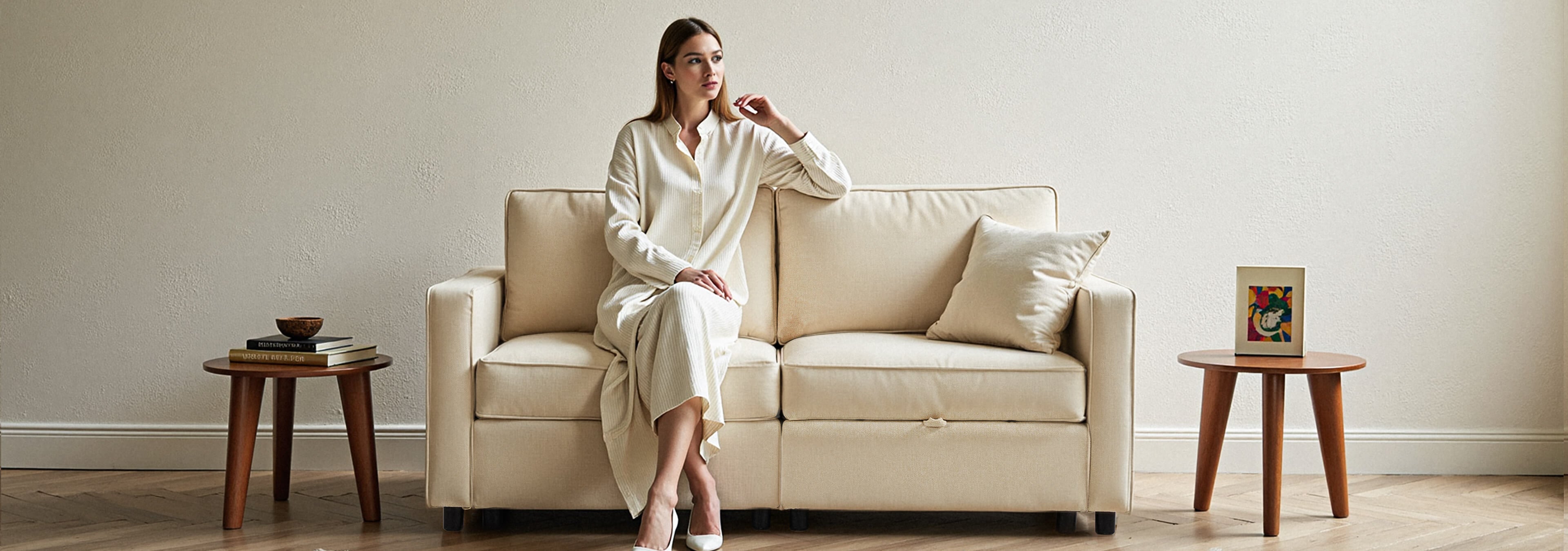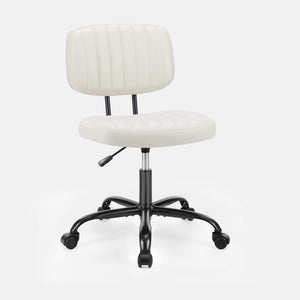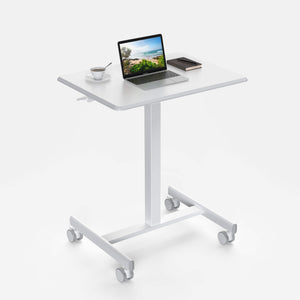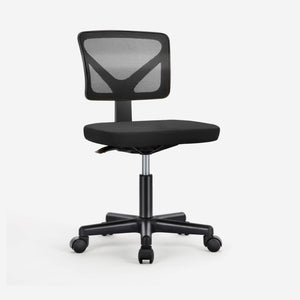Lumbar Support Addresses Lower Back Comfort
Hours at a desk can take a toll on your lower back, especially without proper support. The lumbar feature helps maintain your spine's natural curve rather than letting you slouch into positions that might cause discomfort later. Adjusting it to match your specific back shape can make extended work sessions feel less taxing on your body.
Reversible Armrests Adapt to Your Work Style
Being able to flip or adjust the armrests means you can customize the chair based on what you're doing. Some tasks—like typing or using a mouse—feel more comfortable with armrests positioned one way, while reading or video calls might work better with a different configuration. This flexibility lets you switch things up throughout your workday based on your current activity.
Proper Chair Height Changes Everything
Your feet should rest flat on the floor with your knees at roughly a 90-degree angle when you're seated. Too high, and you'll feel pressure on the backs of your thighs; too low, and your knees end up higher than your hips, which can strain your back. Taking a moment to adjust the height properly can prevent discomfort that builds up over hours of sitting.
Positioning Relative to Your Desk Matters
The distance between your chair and desk affects your posture more than you might realize. Sitting too far away causes you to lean forward and strain your shoulders, while being too close can make you hunch. Aim for a setup where your elbows bend comfortably at your sides when your hands reach the keyboard, without having to stretch or scrunch up.
Movement Throughout the Day Helps
Even the most comfortable chair benefits from you taking regular breaks to stand and move around. Your body isn't designed for prolonged static positions, regardless of how ergonomic your seating is. Setting a reminder to get up every hour—even just for a minute or two—can help reduce stiffness and keep your energy levels more consistent.
Armrest Height Affects Shoulder Tension
When your armrests sit at the right height, your shoulders can relax naturally without hunching up or drooping down. Too high, and you'll feel your shoulders creeping toward your ears; too low, and they don't provide meaningful support. The sweet spot is usually where your arms rest comfortably with your shoulders in a neutral, relaxed position.
Different Tasks May Need Different Settings
Writing by hand, typing, using design software, or participating in video meetings can all feel better with slightly different chair configurations. Don't hesitate to adjust your chair throughout the day as your activities change. What works for focused computer work might not be ideal for leaning back during a phone call.
Break-In Period Helps You Find Your Preferences
New chairs sometimes feel different than expected at first. Give yourself a week or so to experiment with various adjustments before deciding on your final setup. Your body needs time to adapt, and you'll discover which positions feel most sustainable over full workdays rather than just the first hour.
Fabric Choice Impacts Comfort Over Time
The material covering your chair affects how it feels during long sitting sessions. Breathable fabrics tend to stay cooler in warm weather, while cushioned surfaces provide more padding but might retain heat. Think about your typical work environment temperature and how long you usually sit when evaluating what will work for your situation.
Investing in Seating Pays Off
When you calculate how many hours you spend in your office chair each week, the cost per use becomes quite reasonable. Quality seating that supports your body properly can help you feel less fatigued at the end of workdays. Many people notice they can focus better and work more comfortably when they're not constantly shifting to find a less uncomfortable position.


